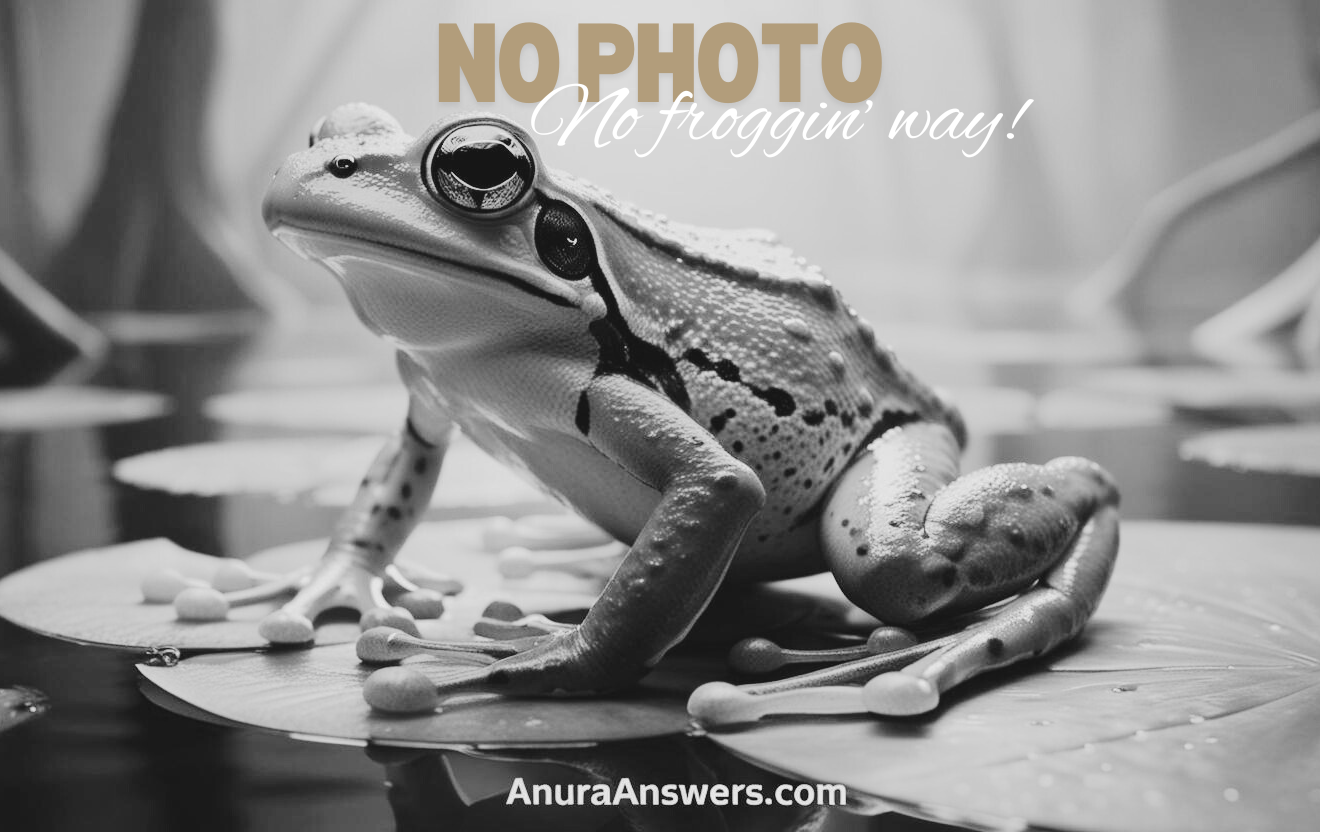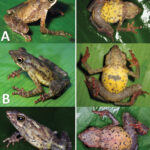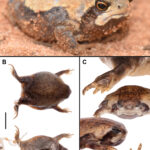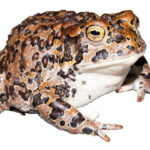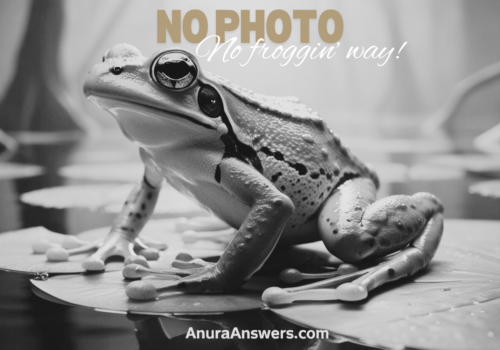- Exploring the Enchanting World of <em>Atelopus mandingues</em>: A Jewel of Amphibian Biodiversity
Exploring the Enchanting World of Atelopus mandingues: A Jewel of Amphibian Biodiversity#
Hidden among the mist-cloaked slopes, nestled in lush pockets of vibrant cloud forests, the remarkable Atelopus mandingues thrives with resilience and grace. Commonly heralded for its vivid coloration and striking patterns, Atelopus mandingues, a species belonging to the diverse and intriguing harlequin frogs, not only delights amphibian lovers but also holds critical ecological significance. Despite its captivating appearance, this enigmatic creature remains largely misunderstood by many. Today, this comprehensive exploration will illuminate the life, behavior, vulnerabilities, and the intrinsic beauty of Atelopus mandingues, guiding readers deep into the heart of its rainforest sanctuary.
Taxonomy and Classification#
Atelopus mandingues belongs to the family Bufonidae, the well-known toad family that encompasses hundreds of distinct amphibian species worldwide. The genus Atelopus, often known as the “harlequin frogs,” is characterized by brightly colored frogs whose vivid hues often warn predators of potent toxins concealed in their skin.
Atelopus mandingues was first scientifically described and officially recognized based on meticulous field observations, detailed morphological analyses, and molecular genetic studies, procedures that have become crucial for accurately differentiating closely related species within this diverse genus. Closest relatives include other harlequin frogs that share similar vibrant skin patterns and prefer similar ecosystems, each adapted to unique ecological niches yet united by an evolutionary lineage that emphasizes chemical defense and visual warning.
Natural Habitat#
Geographical Range and Distribution#
The fascinating world of Atelopus mandingues lies hidden amidst the humid elevations of northern South America, particularly prevalent in the biodiverse Andean cloud forests. Specifically, this species inhabits regions within Colombia and Venezuela, thriving in ecosystems characterized by a consistently high moisture level, cool temperatures, persistent mists, and abundant flowing waters—conditions vital for the species’ skin respiration and reproductive behaviors.
A Habitat That Breathes Life#
A wanderer venturing through these cloud forests would encounter a verdant paradise, lush with moss-covered trees draped in lichen, mist-laden mornings giving birth to a symphony of sounds. Here, cascading streams snake gracefully through shaded gullies, a rhythmically soothing backdrop that defines the habitat favored by Atelopus mandingues. The amphibians heavily rely on pristine riparian environments, characterized by clear, unpolluted waterways and a rich diversity of plant and insect life that supports their voracious appetite.
These secluded habitats provide ideal conditions—ample moisture, shaded environments, and complex microclimates—that permit ample shelter and plentiful prey. Such ecological niches play host to intricate webs of biodiversity, contributing heavily to ecosystem resilience. For Atelopus mandingues, conservation of these immaculate landscapes isn’t merely preferred—it’s a fundamental requirement for species survival.
Physical Characteristics#
Every glance at Atelopus mandingues reveals an amphibious gemstone sparkling brightly amid leaf litter and moss-stained rocks. Typical adult individuals measure between 2 to 4 centimeters, sporting an elegant physique seemingly sculpted with nature’s careful artistry. Yet this diminutive size belies a remarkable evolutionary refinement intended to evoke a clear visual message: caution.
Coloration and Adaptations#
The brilliance of their beauty lies embedded in their bold coloration. Patterns range from vibrant yellows, greens, oranges, and blacks, arranged in dazzling mosaics or stripes across their bodies. Such vivid patterns communicate a clear warning to potential predators: this frog is toxic, not palatable prey.
Indeed, beneath their attractive exterior lies a cocktail of toxic alkaloids produced by specialized glands in their skin, deterring potential predators. This adaptation—aposematic coloration linked with potent chemical defenses—clearly demonstrates nature’s intricate blend of beauty and survival. Their striking hues serve a dual function, providing camouflage against brightly-colored forest floor foliage and deterring potential threats.
Behavior and Life Cycle#
Hunters Beneath the Leaves#
At the heart of the amphibian’s daily existence is hunting. With patient precision, Atelopus mandingues deftly captures small invertebrates primarily ants, mites, tiny beetles, and flies. Their feeding behavior involves careful ambush strategies, relying on motion-detection and excellent vision developed specifically for low-light conditions beneath dense forest canopies, making them efficient predators in their microhabitat.
The Poetry of Amphibian Romance#
There is perhaps no greater spectacle than the courtship rituals of Atelopus mandingues. After heavy rains in breeding seasons, males ascend rocks, trees, and stream banks, vocalizing fervently—a mesmerizing chorus echoing throughout the cloud forests. These melodious calls, finely tuned adaptive traits, effectively attract receptive females and signal territorial boundaries.
Once paired, the female harlequin frog carefully selects streamside locations to arrange her eggs. Eggs are laid in glistening clusters, carefully adhered to submerged stones or vegetation. Tadpole development occurs swiftly in oxygen-rich waters. Quickly, these juveniles metamorphose from aquatic larvae into terrestrial juveniles, ready to bravely navigate through the perilous intersections of freshwater and terrestrial ecosystems, ensuring continued species resilience.
Ecological Role#
Atelopus mandingues‘ ecological significance can’t be overstated. As skilled predators, they regulate insect populations, maintaining a delicate balance within their ecosystem’s food web dynamics. Equally important, they serve as prey for larger species, including birds, snakes, and small mammals, making them an essential link within the trophic cascade.
Moreover, amphibians like Atelopus mandingues function as incredibly sensitive “bioindicators,” rapidly responding to environmental changes such as habitat degradation, climate change, and pollution levels. Declines in amphibian populations often signal broader environmental troubles, highlighting their critical role in conservation planning and ecological monitoring.
Threats and Conservation Status#
Currently, the resilient beauty of Atelopus mandingues faces relentless pressures, primarily due to habitat destruction, climatic fluctuations, and disease. Land-use changes—such as agriculture expansion, logging, infrastructure development—have substantially fragmented their habitats, leading to diminished population numbers and creating isolated pockets that threaten genetic exchange.
Chytrid Fungus: A Looming Threat#
Beyond habitat loss looms the haunting specter of chytridiomycosis, a fungal disease caused by Batrachochytrium dendrobatidis, responsible for drastic declines in amphibian species worldwide and particularly devastating within the genus Atelopus. Urgent conservation measures already prioritize monitoring efforts, fungus management, captive breeding programs, and targeted habitat restoration projects, aiming desperately to reverse population declines before it is too late.
Cultural and Scientific Significance#
Throughout regions they inhabit, frogs like Atelopus mandingues often captivate human imagination, symbolizing transformation, resilience, and environmental purity. Indigenous communities often recognize amphibians as culturally significant, featuring them prominently in folklore, embracing their intricate symbolism to educate new generations on the crucial balance of nature.
From a scientific perspective, research involving Atelopus mandingues has generated vital insights into evolutionary biology, molecular genetics, environmental toxicology, and climate change ecology. Conserving this remarkable species does not merely protect a beautiful creature—rather, it preserves critical natural laboratories essential for future biological discoveries essential for sustaining planetary biodiversity.
Conclusion: Guardians of Earth’s Precious Jewels#
Ultimately, the story of Atelopus mandingues embodies nature’s complexity, resilience, and urgent vulnerability against environmental threats. These small, vibrant frogs represent an essential bridge connecting people, ecosystems, and cultures, vividly demonstrating humanity’s interconnectedness with biodiversity.
By furthering our understanding, prioritizing their conservation, and embracing stewardship of natural habitats, we act not merely to safeguard a single species but to protect entire ecosystems unraveling the intricacies and interconnectedness of life. Engaging with conservation efforts, supporting organizations dedicated to habitat restoration, and advocating for sustainability ensure that future generations may continue marveling at the vivid elegance of the resplendent harlequin frog, Atelopus mandingues.
